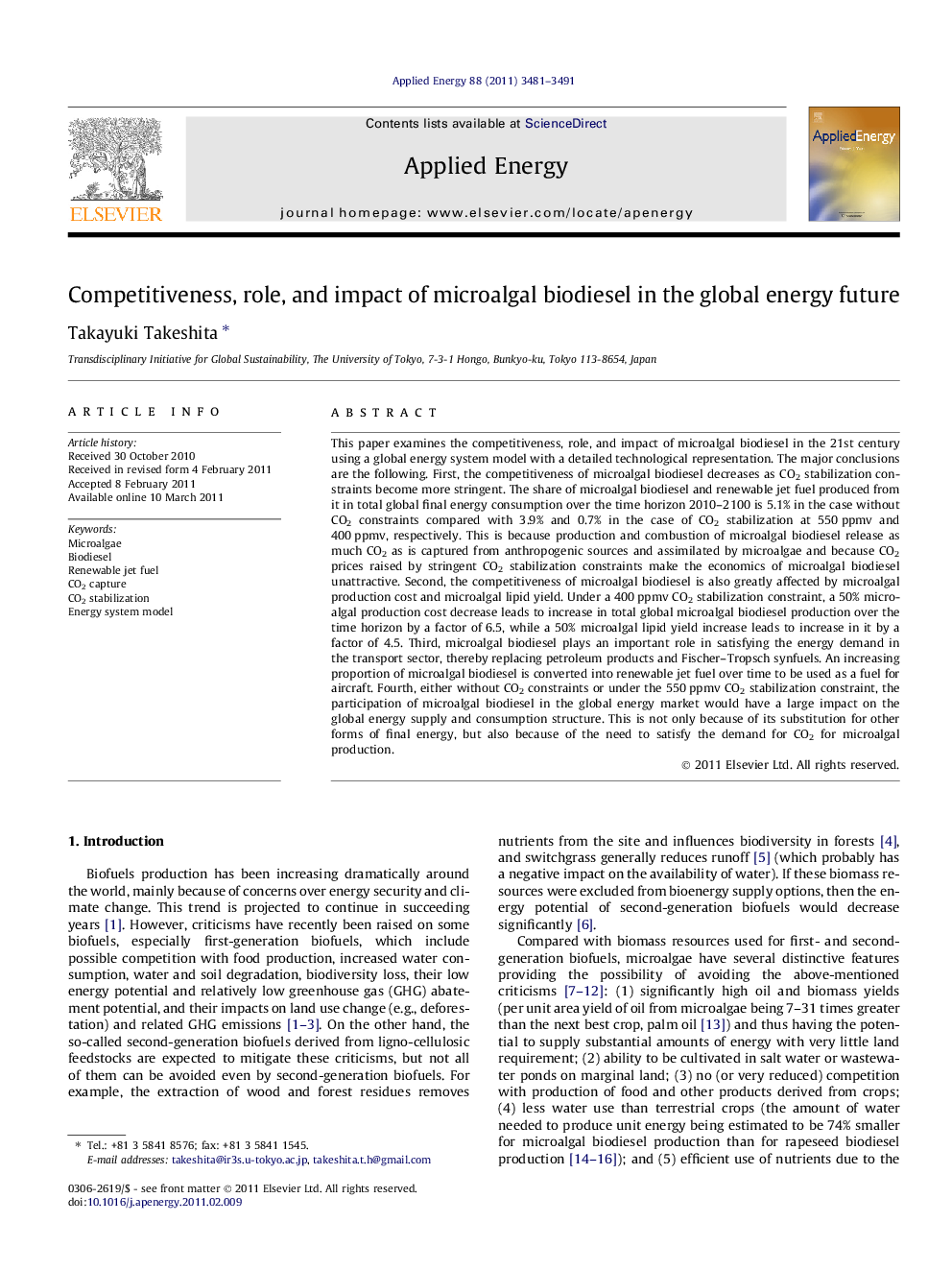| Article ID | Journal | Published Year | Pages | File Type |
|---|---|---|---|---|
| 244313 | Applied Energy | 2011 | 11 Pages |
This paper examines the competitiveness, role, and impact of microalgal biodiesel in the 21st century using a global energy system model with a detailed technological representation. The major conclusions are the following. First, the competitiveness of microalgal biodiesel decreases as CO2 stabilization constraints become more stringent. The share of microalgal biodiesel and renewable jet fuel produced from it in total global final energy consumption over the time horizon 2010–2100 is 5.1% in the case without CO2 constraints compared with 3.9% and 0.7% in the case of CO2 stabilization at 550 ppmv and 400 ppmv, respectively. This is because production and combustion of microalgal biodiesel release as much CO2 as is captured from anthropogenic sources and assimilated by microalgae and because CO2 prices raised by stringent CO2 stabilization constraints make the economics of microalgal biodiesel unattractive. Second, the competitiveness of microalgal biodiesel is also greatly affected by microalgal production cost and microalgal lipid yield. Under a 400 ppmv CO2 stabilization constraint, a 50% microalgal production cost decrease leads to increase in total global microalgal biodiesel production over the time horizon by a factor of 6.5, while a 50% microalgal lipid yield increase leads to increase in it by a factor of 4.5. Third, microalgal biodiesel plays an important role in satisfying the energy demand in the transport sector, thereby replacing petroleum products and Fischer–Tropsch synfuels. An increasing proportion of microalgal biodiesel is converted into renewable jet fuel over time to be used as a fuel for aircraft. Fourth, either without CO2 constraints or under the 550 ppmv CO2 stabilization constraint, the participation of microalgal biodiesel in the global energy market would have a large impact on the global energy supply and consumption structure. This is not only because of its substitution for other forms of final energy, but also because of the need to satisfy the demand for CO2 for microalgal production.
